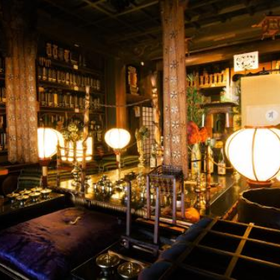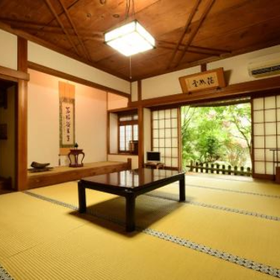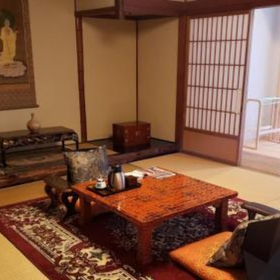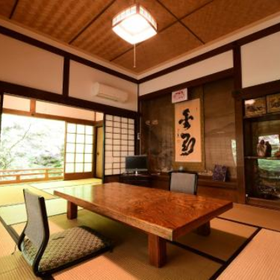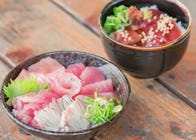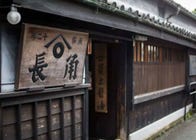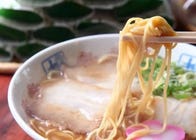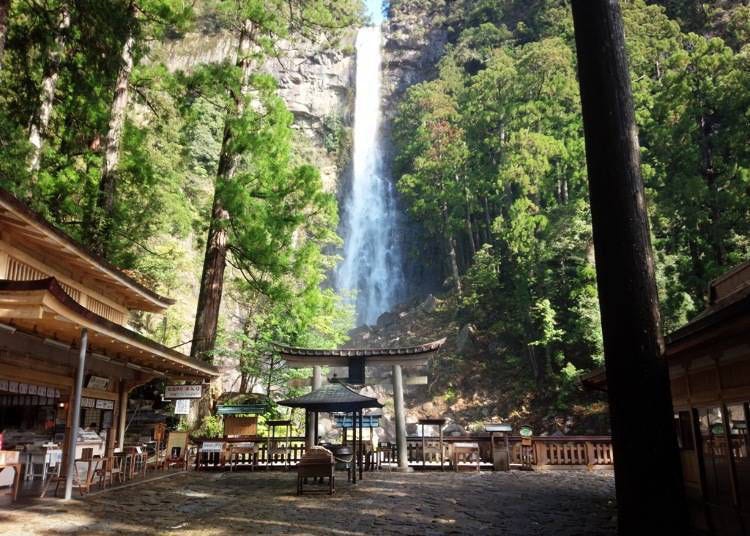
35 Things to Do in Wakayama Japan: Treasure Trove of Nature and History
- Written by: WESTPLAN
Discover the abundance of activities and attractions that await you in Wakayama, Japan. This enchanting destination offers a plethora of opportunities for visitors to immerse themselves in its rich cultural heritage and breathtaking natural beauty.
Whether you're seeking serene temples, stunning landscapes, or delectable cuisine, Wakayama has it all.
To help you make the most of your visit, we've curated a list of must-see scenic spots in Wakayama, accompanied by transportation discount tickets. Whether you're seeking hidden gems, historic temples, rejuvenating hot springs, or delectable cuisine, our guide will serve as your ultimate companion to experience the best of what Wakayama has to offer.
What kind of place is Wakayama?
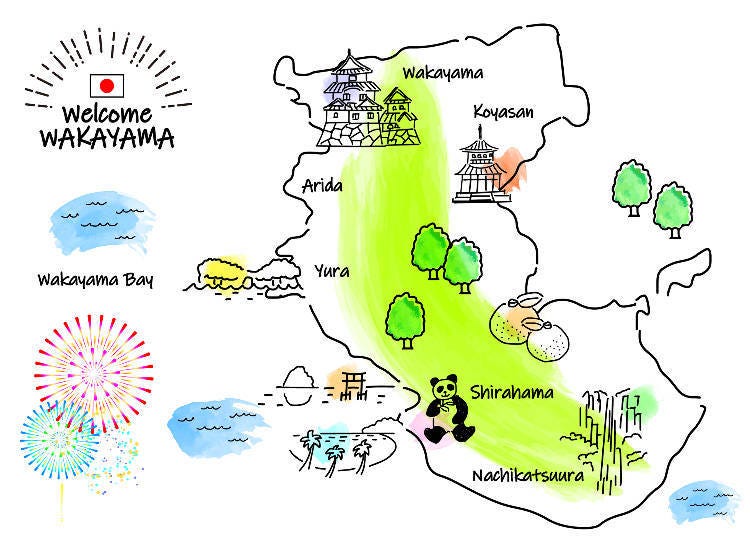
First of all, a little bit more about the quaint prefecture of Wakayama. Located in the Kansai region, the borders of Wakayama is connected to Osaka, Nara, and Mie.
To the west of Wakayama lies Wakayama Bay, whereas the vast Pacific Ocean lies to its south and east.
The prefecture can be divided into five major zones from the north to south, namely:
・Wakayama City, which is home to the Wakayama Prefectural Government Office and Wakayama Castle
・Koya-san, which features an ancient pilgrimage route
・Nanki Shirahama, located to the west with a perfect balance of oceans, hot springs, and greenery
・Nachikatsuura
・Kumano
Each zone has exclusive sights, sounds, and experiences to offer that can't be had anywhere else, such as a mystical ancient pilgrim path or ancient hot springs that have refreshed generations upon generations for countless years.
There will also be plenty of local specialties to try as Wakayama is one of Japan's most well-known food producers. For example, the prefecture is the top producer of mandarin oranges by volume.
Other than that, you'll also find plenty of fresh seafood, such as tuna fish and groupers, as the prefecture is adjacent to oceans and seas.
For something more regional, try their pickled plums and Koya-dofu (Koya tofu)! Look no further than Wakayama for the local tastes of Japan in their purest form.
Transportation options to and within Wakayama
From Osaka/Kyoto
Wakayama is located south of Osaka and Wakayama Station is directly accessible from Tennoji Station on the JR Lines without any train transfers. The journey one-way on a regular train will take about an hour and 20 minutes. If you don't mind paying a bit more for the express trains, you can reach in 43 to 48 minutes. You can also take the JR Kishuji Rapid Service from Shin-Imamiya Station. This direct train service will bring you there in about an hour and 25 minutes.
Supposing you're traveling to Wakayama from Kyoto, which lies north of Osaka. There are two main methods you can consider. You could either take the Shinkansen from Kyoto Station to Shin-Osaka Station and then transfer to the Limited Express Kuroshio train to Wakayama Station (about an hour and 31 to 39 minutes), or hop on a regular JR train to Osaka Station before changing to the Kishuji Rapid Service to your final destination of Wakayama Station (about two hours and 20 to 26 minutes).
Whether you're setting off from Kyoto or Osaka, a one-way train ticket will cost at least a few thousand yen and these transportation costs can rack up quickly without you realizing it. As such, we would be remiss to not mention the availability of special discount tickets for tourists who will be hitting both Osaka and Kyoto on their trips. Some useful ones to consider would be the JR West Kansai Pass, JR Kansai WIDE Area Pass, and JR Kansai Hokuriku Area Pass.
From Tokyo
You can hop on a direct flight to Wakayama Prefecture's Nanki-Shirahama Airport from Tokyo's Haneda Airport. The flight should take about one hour and 15 minutes, and this would be the fastest way to get to Wakayama from Tokyo. The only disadvantage is how much pricier it can get compared to the other options, as one-way tickets start from 30,000 yen, though discounts are available for early birds who book at least three months in advance.
Another method is to take the Shinkansen to Shin-Osaka Station, then transfer to a JR Line heading towards Wakayama. This should take about three-and-a-half to four hours one-way and cost 15,410 yen or more, depending on various factors.
Yet another method to consider is to take an overnight highway bus. The trip will take about nine to 10 hours, but the fare is a very reasonable 6,000 to 8,000 yen, making it the most suitable option for travelers on a budget with some extra time to spare.
Traveling around Wakayama
The main mode of rail transport in Wakayama would be the JR Lines, Nankai Electric Railway, Wakayama Electric Railway, and a network of public buses.
The JR Lines operating in Wakayama are the Hanwa Line, Kisei Main Line, and Wakayama Line.
If you're coming to Wakayama from Osaka, Kyoto, or another place in Kansai, you can use one of the discounted rail tickets that covers Wakayama to save some money that can then be used to enjoy the area more thoroughly.
As for the private rail operators, Nankai-Kada Line with the signature Medetai seabream livery train is often mentioned among travelers looking for unique experiences. The Kishigawa Line on the Wakayama Electric Railway is also famous for its cat stationmasters. Both lines are covered under a one-day pass for the area that is especially suitable for those planning to do a deep dive into what Wakayama has to offer.
Wakayama Sightseeing Ticket
・Validity: One day
・Areas covered: Round trip from station of issue to Wakayamashi Station + one-day unlimited pass for Wakayama Bus and Wakayama Bus Naga
・Admission: Adults 2000 yen / Children 1000 yen
・Sold at: Namba (Customer Center on the 2nd floor / Express Ticket Counter on the 3rd floor), Shin-Imamiya, Tengachaya, Sumiyoshi Taisha, Sakai
Wakayama Electric Railway and Kishigawa Line - One-day pass
・Validity: One day
・Areas covered: All Wakayama Electric Railway and Kishigawa Lines
・Admission: Adults 800 yen / Children 400 yen
・Sold at: Wakayama Station Platform 9 / Idakiso Station (9:00 a.m. - 5:30 p.m.) / Kishi Station Tama Cafe (10:00 a.m. - 4:00 p.m.)
Wakayama City Places of Interest
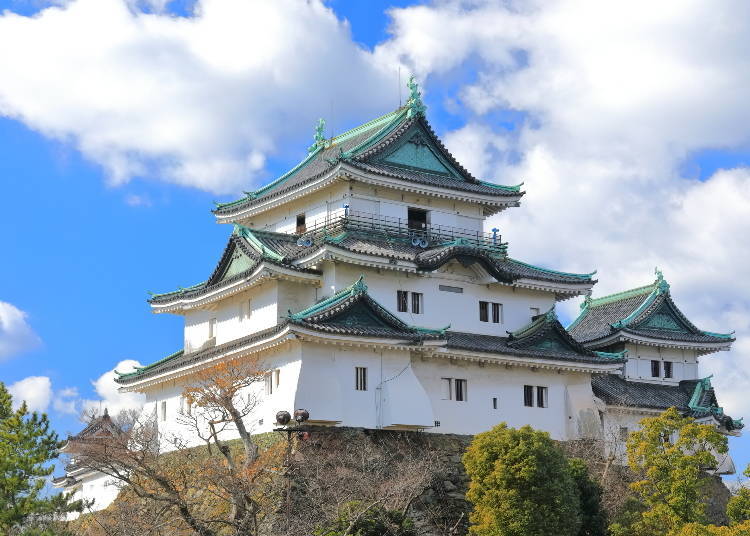
1. Wakayama Castle: Former residence of famous Shogun Yoshimune Tokugawa
Constructed by Sengoku era feudal lord Hideyoshi Toyotomi and later served as the residence of the Shogun Yoshimune Tokugawa, Wakayama Castlewas unfortunately destroyed by bombings during the second World War but reconstructed in 1958, where it remains until today. The imposing castle is surrounded by parks, gardens, historic buildings, and a zoo - places of interest worth swinging by should you be in the area. It is also a popular sakura viewing spot as there are more than 1,300 sakura trees planted on park premises.
-

-
Address
3 Ichibancho, Wakayama City, Wakayama Prefecture, 640-8146
View Map -
Nearest Station
Wakayamashi Station (Nankai Line / Nankai-wakayamako Line)
16 minutes on foot
- Phone Number 073-422-8979
-
Address
3 Ichibancho, Wakayama City, Wakayama Prefecture, 640-8146
2. Wakayama City Sightseeing Gifts Center: For all your Wakayama souvenir shopping needs
The center can be found on the first floor of Wakayama City's Wakayama Historical Museum. Expect the shop to be packed with all the local specialty souvenirs and snacks money can buy, from daily goods emblazoned with the Wakayama brand to niche oddities like ninja tools. Even window shopping can be quite an experience in itself! On the second floor of the museum are some historic exhibits and entry tickets cost 100 yen per person. This is an excellent place to learn more about the history of Wakayama Castle and the culture of the region in general.
-
Wakayama City Sightseeing Gifts Center和歌山市観光土産品センター
- Address 3 Ichibanchō, Wakayama, 640-8146
Hours: March to November 9:00 a.m. — 6:00 p.m. / December to February 9:00 a.m. - 5:00 p.m.
Closed: December 29 - January 3
3. Kimiidera Temple: Home of the giant golden-armed Kannon statue
Kimiidera Temple was built at around 770 C.E. and the wooden Kannon statue enshrined within has been gilded from top to toe with gold. This statue is currently the biggest wooden Kannon statue in Japan and its serene expression contrasts its massive, looming form, leaving a lasting impression behind on many who gaze upon it. The temple building itself is in a vibrant shade of red that stands out conspicuously yet tastefully among the natural greenery that surrounds it. Legend has it that a Japanese Emperor once visited the temple simply to admire this breathtaking sight as well! It's no wonder that the temple has been listed among one of of Japan's top 100 spots for sakura appreciation. You'll be able to see these pretty pink petals appearing on trees nearby from March onwards, making it one of the earliest places in Kansai to admire sakura during the season.
-

-
Address
1201, Kimiidera, Wakayama-shi, Wakayama, 641-0012
View Map -
Nearest Station
Kimiidera Station (JR Kisei Line / JR Kinokuni Line)
8 minutes on foot
- Phone Number 073-444-1002
-
Address
1201, Kimiidera, Wakayama-shi, Wakayama, 641-0012
4. Kishu Toshogu: A splendid shrine of brilliant colors
Built by Yorinobu Tokugawa as a memorial for his father Ieyasu Tokugawa, the Kishu Toshogu shrine was completed in 1621. It is lavishly decorated with wall art by famous artist Tanyu Kano and decked out in beautiful carvings of brilliant hues much like the Nikko Toshogu, another shrine that was built to commemorate Ieyasu Tokugawa. Within its premises, you will find seven structures such as a crimson red temple gate, prayer halls, and the main shrine, all of which are listed as Important Cultural Properties of Japan. Come in May to be delighted by the Wakamatsuri Festival, a ceremonial event where a large group of men will carry a massive portable shrine down 108 steps, followed by a 1000-person parade and other festive features designed to promote a celebratory mood among participants and onlookers alike.
-

-
Address
2-1-20, Wakauranishi, Wakayama-shi, Wakayama, 630-8217
View Map -
Nearest Station
Wakayama Station (JR Kisei Line / JR Hanwa Line / JR Wakayama Line / JR Kinokuni Line)
25 minutes by bus
- Phone Number 073-444-0808
-
Address
2-1-20, Wakauranishi, Wakayama-shi, Wakayama, 630-8217
5. Kishi Station: Come meet the stationmaster - Tama the cat!
One of the stations operated by Wakayama Electric Railway, Kishi Station was in dire financial straits and at risk of being closed down when they adopted a calico cat by the name of Tama in 2007 and appointed her as stationmaster. The forgotten station soon became a popular place of interest in Wakayama and the increased ridership as a result allowed the station to stay open. Although Tama the First has crossed the rainbow bridge, she has been succeeded by Nitama (Tama the Second) and Yontama (Tama the Fourth). The Kishu Station building has also been installed with cat ears, and there's a Tama Cafe and Tama Museum you can explore inside. Don't forget the Tama Densha, a train that has been painted to resemble the Honorary Eternal Stationmaster! This a stop cat lovers visiting Japan can't afford to miss.
-

-
Address
803, Kishigawachokoudo, Kinokawa-shi, Wakayama, 640-0413
View Map -
Nearest Station
Kishi Station (Wakayama Dentetsu-kishigawa Line)
0 minute on foot
- Phone Number 073-478-0110
-
Address
803, Kishigawachokoudo, Kinokawa-shi, Wakayama, 640-0413
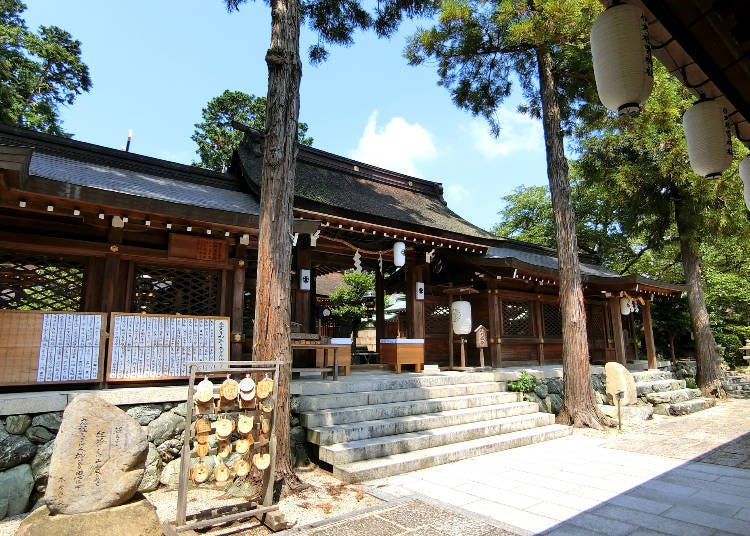
6. Itakiso Shrine: Immersing in the vibe of the forest
Tucked away in the forest is the over 1,300 years old Itakiso Shrine, a rustic place that blends in harmoniously with the surrounding forest as the main building, temple gate, ceremonial water basin, and other fixtures are made from wood, in addition to the many wood carvings on display as well. The nearby Itakiso Station on the Wakayama Railway Kishigawa Line is only a few stops away from Kishi Station and also served by a cat stationmaster, making Itakiso the next destination after visiting Kishi pretty much a no-brainer for travelers who are big on efficiency.
-
Itakiso Shrine伊太祁曽神社
- Address 558 Idakiso, Wakayama, 640-0361
7. Tomogashima: An enigmatic little island of natural and historic sights
An uninhabited island off the northwestern coast of Wakayama, Tomogashima has been used as a military fortress of Japan even before the Second World War. After being included in the Setonaikai National Park area, the island was redeveloped into a camping and sightseeing facility while preserving its many historical relics, such as the artillery batteries and land defense bases. A military base overcome by nature from disuse presents an atmosphere that is uniquely somber, and you would be forgiven for feeling like you've stepped onto a mysterious new land. All of this come together to make Tomogashima a sensory delight and one of the most popular places of interest in Wakayama.
-

-
Address
Kada, Wakayama-shi, Wakayama, 640-0103
View Map -
Nearest Station
Kada Station (Nankai-kada Line)
- Phone Number 073-459-0314
-
Address
Kada, Wakayama-shi, Wakayama, 640-0103
8. Awashima Shrine: Japanese dolls for as far as the eye can see
The shrine is a place of prayer for those seeking marriage, health, and safe childbirth. However, the shrine is most well-known for something else - the more than 20,000 Japanese dolls on display throughout shrine grounds. Why so many dolls? Not because the shrine keeper is a fan of them, that's for sure. The reason is that most Japanese view the dumping of these lifelike figurines into trash heaps as cruelty and have entrusted them to the shrine for safekeeping instead of the alternative. Over the years, this has added to the shrine's overall aura of mystique. On Girls' Day every year (March 3), Awashima Shrine holds a Hinamatsuri festival to send dolls blessed by the shrine out into the sea on little boats as a symbol of fortune and longevity.
-
Awashima Shrine淡嶋神社
- Address 118 Kada, Wakayama, 640-0103
Hours: 9:00 a.m. - 5:00 p.m.
9. Wakayama Marina City: Fresh tuna and Wakayama fruits
This is a large-scale island resort town made up of four main zones: Kuroshio Onsen, Kuroshio Market, Fruit Village and Porto Europa, of which Kuroshio Market is undoubtedly the most popular.
Every day, three sessions of tuna dissection will be held and fresh sashimi awaits visitors who manage to get their hands on a portion of the freshly sliced meat, which can be eaten with other seafood and seafood-derived snacks.
After that, cleanse your palate at Fruit Village by trying out as many of the locally-grown Wakayama fruits as you can, such as mandarin oranges, strawberries, and peaches.
Once the feasting is over, go for a serene and reposeful walk down Porto Europa, which, as its name suggests, is lined with European-style architecture guaranteed to take you out of the present for a time.
The Umitsuri Fishing Park is a family-friendly area that allows parents and children to bond over a spot of ocean fishing. All are welcome, whether newbie or veteran fisher.
With so many things to experience at Wakayama Marina City, you could absolutely spend half a day or more here, so if that's the plan for Wakayama, this is a place you should seriously consider!
-

-
Address
1527, Kemi, Wakayama-shi, Wakayama, 641-0014
View Map -
Nearest Station
Kainan Station (JR Kisei Line / JR Kinokuni Line)
15 minutes by bus
- Phone Number 073-448-0008
-
Address
1527, Kemi, Wakayama-shi, Wakayama, 641-0014
-

-
Address
1535-3, Kemi, Wakayama-shi, Wakayama, 641-0014
View Map -
Nearest Station
Kainan Station (JR Kisei Line / JR Kinokuni Line)
15 minutes by bus
- Phone Number 073-448-0020
-
Address
1535-3, Kemi, Wakayama-shi, Wakayama, 641-0014
Koya-san Places of Interest
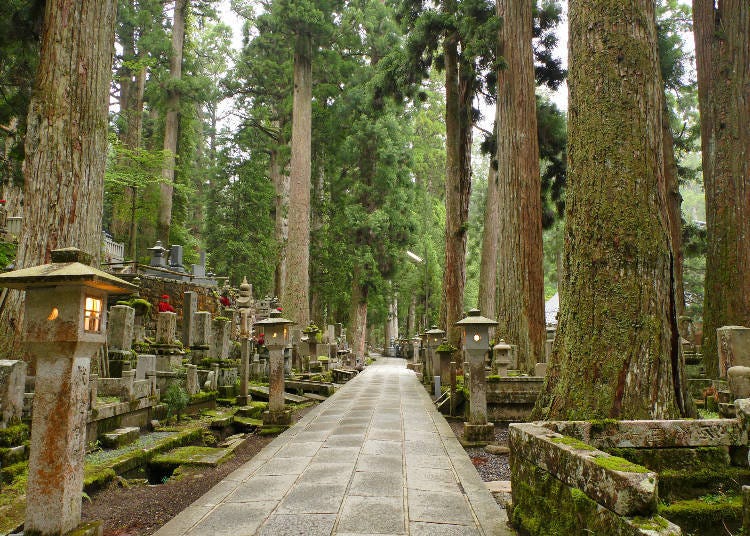
10. Okuno-in: A must-see world heritage site
The name Koya-san, which literally means Mount Koya, doesn't strictly refer to any one particular mountain but a vast mountain settlement established by the monk Kukai, the founder of Shingon Buddhism. The most iconic building here is Okuno-in. From the Ichinohashi Bridge to Torodo Lantern Hall, the two-kilometer-long approach to the temple is guarded on both sides by lush cedar trees and the walk is thus pleasant to experience. Along the way, you'll hear the monks-in-training chanting their scriptures in one of the sub-temples nearby or perhaps even bump into quiet and courtly pilgrims taking the same path, adding to the tranquil dignity of this Buddhist sanctuary.
-

-
Address
Kouyasan, Kouya-cho, Wakayama, 648-0211
View Map -
Nearest Station
Koyasan Station (Nankai Koyasan Cable)
- Phone Number 0736-56-2002
-
Address
Kouyasan, Kouya-cho, Wakayama, 648-0211
11. Danjo Garan: Divine tranquility and therapy
Danjo comes from Sanskrit and refers to a "Monk's Training Place" in India, the origin of Buddhism. As the starting point of Kukai's establishment of the Koya-san mountain training grounds, Danjo Garan is one of the two major sanctuaries here alongside Oku-no-In. The impressive Nemoto Tower in the temple is the face of the temple. When it is lit up at night, it exudes a different sort of spiritual serenity than what it does in the day under sunlight. The Kondo Golden Hall is another amazing sight to behold, and the Goeido Hall contains images of ten of Kukai's top disciples. There's also the Sanko-no-Matsu, a triple-forked vajra Buddhist instrument that was said to have led Kukai to select Koya-san as the headquarters for Shingon Buddhism in the first place. During autumn, the fiery fall leaves enhance the somber presence of the temple complex and is a must-see if you will be in the area around this period of time.
-

-
Address
152, Kouyasan, Kouya-cho, Ito-gun, Wakayama, 648-0211
View Map -
Nearest Station
Koyasan Station (Nankai Koyasan Cable)
13 minutes by bus
- Phone Number 0736-56-3215
-
Address
152, Kouyasan, Kouya-cho, Ito-gun, Wakayama, 648-0211
12. Kongobuji Temple: Intricately interwoven with surrounding greenery
This is the center of the 117 temples in Koya-san and was initially built by Hideyoshi Toyotomi to mourn his dead mother. It merged with the adjacent temple in 1869 and was renamed Kongobuji. The temple's main feature is how it fits right in with the forest that surrounds it. To appreciate the beauty of this area, take a walk along the Nanakasumiyama hiking trail or one of the temple walking trails. You can also rent a bicycle to enjoy the stately sanctuary accompanied by a cool and pleasant breeze that will follow you wherever you cycle.
-

-
Address
132, Kouyasan, Kouya-cho, Ito-gun, Wakayama, 648-0294
View Map -
Nearest Station
Koyasan Station (Nankai Koyasan Cable)
12 minutes by bus
- Phone Number 0736-56-2011
-
Address
132, Kouyasan, Kouya-cho, Ito-gun, Wakayama, 648-0294
13. Reihokan Museum: Understanding the history of Buddhism sanctuaries
Reihokan is a cultural museum that contains important relics collected and preserved for posterity from the time the temple complex was founded - a total of 21 national treasures and 143 important cultural assets like paintings, carvings, craftwork, and other related items. Suitable for those hoping to dive deeper into Koya-san's religious culture by seeing these thousand-year-old relics first hand.
-

-
Address
306, Kouyasan, Kouya-cho, Ito-gun, Wakayama, 648-0211
View Map -
Nearest Station
Koyasan Station (Nankai Koyasan Cable)
15 minutes by bus
- Phone Number 0736-56-2029
-
Address
306, Kouyasan, Kouya-cho, Ito-gun, Wakayama, 648-0211
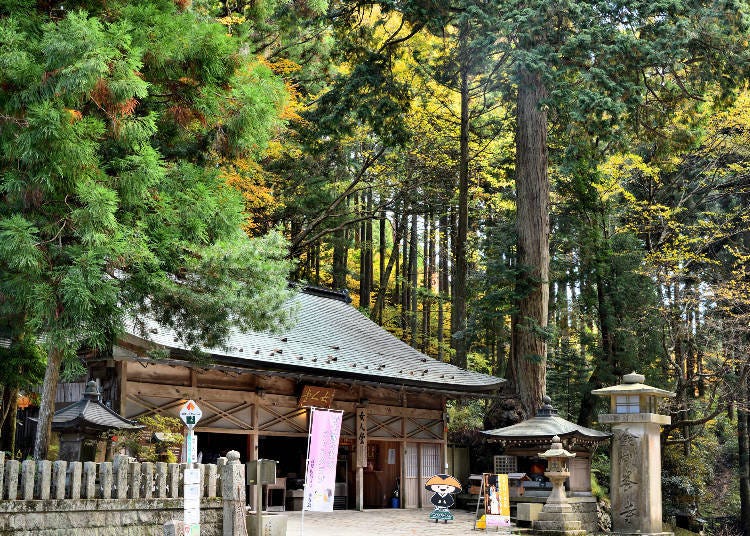
14. Nyoindo Women's Halls: Witnesses to history
The Nyoindo - Women's Halls situated at the entrance of Koya-san were built for womenfolk to rest as they were forbidden from entering the temple complex to worship, although that changed in 1872. The current Nyoindo is the only one of its kind still standing today. Enshrined within it are Dainichi Nyorai, Benzaiten, Vikurvana, and other gods. The simple design of the hall reflects both the sincerity of ancient women worshippers and the melancholy of their inability to access the main complex at the time.
-

-
Address
709, Kouyasan, Kouya-cho, Ito-gun, Wakayama, 648-0211
View Map -
Nearest Station
Koyasan Station (Nankai Koyasan Cable)
5 minutes by bus
- Phone Number 0736-56-2011
-
Address
709, Kouyasan, Kouya-cho, Ito-gun, Wakayama, 648-0211
15. Nakanohashi Kaikan: The best Koya-dofu this side of Wakayama
Located opposite the Nakanohashi carpark, this building offers Buddhist prayer beads for sale along with a wide variety of Koya-san specialty goods, the most famous of which is the Koya-dofu and goma-dofu (sesame tofu). As its name suggests, Koya-dofu is a tofu dish that originated from Koya-san, and while goma-dofu has a rather tedious preparation process, it reflects the spirit of ascetic training and is thus a perennial fixture in Buddhist cuisine. Since there's also a lounge and restaurant in the building, feel free to drop by along the way to the temple to rest, shop, or enjoy a Buddhist shojin-ryori meal.
-
Nakanohashi Kaikan中の橋会館
- Address 49-3 Koyasan, Koya, Ito District, Wakayama 648-0211
Shukubo (Temple Lodging), special accommodations only on Koya-san
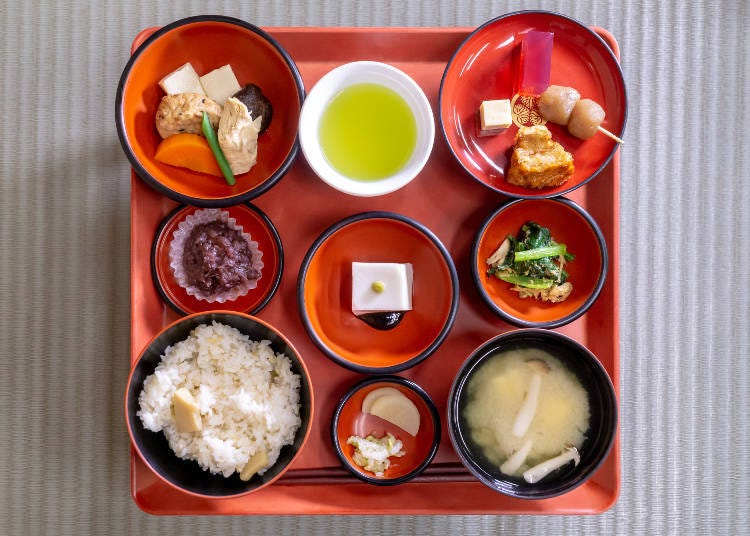
There are more than 100 temples in Koya-san but not all of them are purely for worship. Among these buildings, you'll also find shukubo (temple lodgings) that come equipped with simple bathrooms and bedrooms that are kept meticulously clean and tidy for guests. These places will serve shojin-ryori Buddhist cuisine usually eaten by monks in Japan and conduct morning chanting sessions that visitors are allowed to take part in. Here's your chance to become a Buddhist monk for a day, if you are ever so inclined! This immersive experience can only be had on Koya-san and one of its many shukubo.
16. Shukubo Jimyo-In: Accommodations for the pilgrims
A historic temple in the garden of Koya-san that is being used as a quiet and peaceful place of accommodations. Each seasonal change here comes with its own set of delightful blooms - swaying sakura in spring, rhododendron in summer, maple leaves in autumn, and camellia in winter, just to name a few. The rooms are adorned with beautifully painted wooden folding screens and furniture and Buddhist cuisine will be served inside your personal room itself. The rooms here are designed to make you wake up feeling refreshed in body, mind, and spirit.
-

-
Address
455, Kouyasan, Kouya-cho, Ito-gun, Wakayama, 648-0211
View Map -
Nearest Station
Koyasan Station (Nankai Koyasan Cable)
15 minutes by bus
- Phone Number 0736-56-2222
-
Address
455, Kouyasan, Kouya-cho, Ito-gun, Wakayama, 648-0211
17. Shukubo Soji-In: Vegetarian dining and specialty goma-dofu
Located right next to Kongobuji Temple, Soji-in is likewise surrounded by lush greenery. Ornate old-style folding screens and ancient trinkets adorn the rustic building, which also offers modern facilities such as elevators, parking lots, and large public baths. Needless to mention, all guestrooms are kept spotlessly clean. Buddhist cuisine is offered at the restaurant, including goma-dofu made from a special recipe. In the day, guests may choose to take part in the chanting or writing of scriptures as part of the full Koya-san experience offered by the temple.
-

-
Address
143, Kouyasan, Kouya-cho, Ito-gun, Wakayama, 648-0211
View Map -
Nearest Station
Koyasan Station (Nankai Koyasan Cable)
11 minutes by bus
- Phone Number 0736-56-2111
-
Address
143, Kouyasan, Kouya-cho, Ito-gun, Wakayama, 648-0211
18. Shukubo Joki-In: Experience the thousand-year history of Koya-san in one night
Established by Kukai's top disciple, Doko Jichie, Joko-in has more than 1,200 years of history under its belt. As you walk through the temple grounds with its large religious buildings and peaceful gardens, you can't help but listen to the historic tales they silently narrate with every step you take. Folding screen-style paintings decorate the fully furnished guestrooms and all are welcome to relax in the lodging's gender-separated public baths.
-

-
Address
Koyasan 365, Koyasan, Wakayama, 648-0211
View Map -
Nearest Station
Koyasan Station (Nankai Koyasan Cable)
54 minutes on foot
Vacancy search, reservation
-
from 52,606JPY 1room, 2adults
Check with our partner site as the latest rates, rate details, and guest room requirements may vary.
-
Address
Koyasan 365, Koyasan, Wakayama, 648-0211
19. Shukubo Eko-In: Meditation, scripture writing, and night walks - all in one place
The golden main building of Eko-in is situated atop a hill that overlooks the mountain scenery all around it, and this sight enhances the simple but well-kept garden on temple grounds. All guestrooms are equipped with a bathroom and amenities. You may also ask for a room with a Western-style bed if that is your preference over tatami mat sleeping. The Buddhist training experiences available here include morning worship, homa (fire ritual) prayers, Ajikan meditation, scripture writing, Buddhist cuisine, Oku-no-in night walks, and so on. Highly recommended for serious pilgrims looking for the authentic Koya-san experience.
-

-
Address
Koyasan 497, Koyasan, Wakayama, 648-0211
View Map -
Nearest Station
Koyasan Station (Nankai Koyasan Cable)
Vacancy search, reservation
-
from 29,594JPY 1room, 2adults
Check with our partner site as the latest rates, rate details, and guest room requirements may vary.
-
Address
Koyasan 497, Koyasan, Wakayama, 648-0211
20. Shukubo Saizen-In: A place to divest yourself of worldly worries
This temple is located next to Kongobuji's Danjo Garan, so the iconic tower, Golden Hall, Goeido Hall, and other buildings can be seen right from its yard, making it a unique place to stay even among the many already special shukubo in Koya-san. The gorgeous folding screen-style paintings in guestrooms match well with the naturally picturesque sceneries outside the windows and together they bring a sense of peace and serenity to lodgers. The Buddhist meals served here will include specialty tofu dishes as well as seasonal ingredients, carefully prepared to promote good health in a tasty manner.
-

-
Address
Koyasan 154, Koyasan, Wakayama, 648-0211
View Map -
Nearest Station
Koyasan Station (Nankai Koyasan Cable)
51 minutes on foot
Vacancy search, reservation
-
from 40,000JPY 1room, 2adults
Check with our partner site as the latest rates, rate details, and guest room requirements may vary.
-
Address
Koyasan 154, Koyasan, Wakayama, 648-0211
Other recommended shukubo accommodations on Koya-san:
Nanki Shirahama Places of Interest
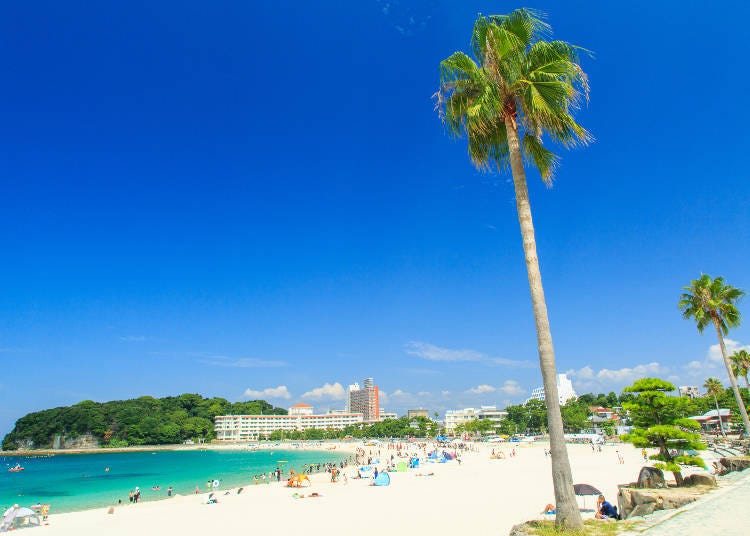
21. Shirarahama Beach: Emerald waves upon ivory sands
The beach is a 620-meter (about 2,000 feet) long stretch of sandy shore in Shirahama Town that meets the ocean at its most emerald. On clear days, the sky's deep shade of azure becomes a beautiful backdrop to contrast the vivid colors on display at this resort town beach, making it look almost tropical. It's no wonder Shirahama is one of the Kansai region's most recognizable marine front sights! About 450,000 visitors travel from afar to revel in its beauty every year and many acknowledge it as one of Japan's top sea bathing spots as well. For the traveler in the mood for a leisurely vacation featuring spacious freedom, Shirarahama Beach will not disappoint!
-

-
Address
Shirahama-cho, Nishimuro-gun, Wakayama Shirahama, 649-2211
View Map -
Nearest Station
Shirahama Station (JR Kisei Line / JR Kinokuni Line)
15 minutes by bus
- Phone Number 0739-43-6588
-
Address
Shirahama-cho, Nishimuro-gun, Wakayama Shirahama, 649-2211
22. Rotenburo Shirasuna: Swimsuits allowed!
An open-air onsen bath in Shirahama that is only open from May to September every year (subject to change). This is one of the rare few hot springs in Japan that allows bathers to soak in swimsuits, which means after you've done your sea bathing at Shirarahama in the day, you can invite family and friends to relax with you in a nice, warm evening hot spring or foot spa directly after. The views of the sunset from this pool are dazzling enough to put anyone in an excellent mood no matter how tiring the day may have been.
-

-
Address
864, Shirahama-cho, Wakayama, 640-8158
View Map -
Nearest Station
Shirahama Station (JR Kisei Line / JR Kinokuni Line)
12 minutes by bus
- Phone Number 0739-43-1126
-
Address
864, Shirahama-cho, Wakayama, 640-8158
23. Engetsu Island: Incredible sunset scenes of Shirahama for the 'gram
The west-facing islet has a circular hole cut through its middle and whenever the sun sets, it captures the event in a unique and mystical manner. The view has come to be one of the most well-known scenes of Shirahama. If you manage to stand at the right spot, you'll even be able to see the sun dipping directly into the moon-shaped hole of the island. This particular sight has been listed among one of Japan's top 100 sunset scenes and is a must-see if you happen to be around the area at the right time.
-

-
Address
3740, Shirahama-cho, Nishimuro-gun, Wakayama, 649-2211
View Map -
Nearest Station
Shirahama Station (JR Kisei Line / JR Kinokuni Line)
15 minutes by bus
- Phone Number 0739-43-6588
-
Address
3740, Shirahama-cho, Nishimuro-gun, Wakayama, 649-2211
24. Senjojiki Rocks: Where crimson sun slides into the watery horizon
This is a rock plateau formed by the waves of the Pacific Ocean hitting the cliffs along the shores of Wakayama for eons. The name literally means "thousand tatami mats" because the jagged steps of the formation look exactly like that - thousands of tatami mats folded on top of each other. Because the rocks are flat horizontally, visitors can take a walk comfortably on them or sit down for a quick break whenever necessary. In fact, sitting down may be recommended due to the amazing view of the boundless Pacific Ocean you can see from this area, making the sunsets here all the more romantic and ephemeral. A great spot to consider for couples on a date!
-

-
Address
Senjojiki, Shirahama-cho, Nishimuro-gun, Wakayama, 649-2211
View Map -
Nearest Station
Shirahama Station (JR Kisei Line / JR Kinokuni Line)
21 minutes by bus
- Phone Number 0739-43-6588
-
Address
Senjojiki, Shirahama-cho, Nishimuro-gun, Wakayama, 649-2211
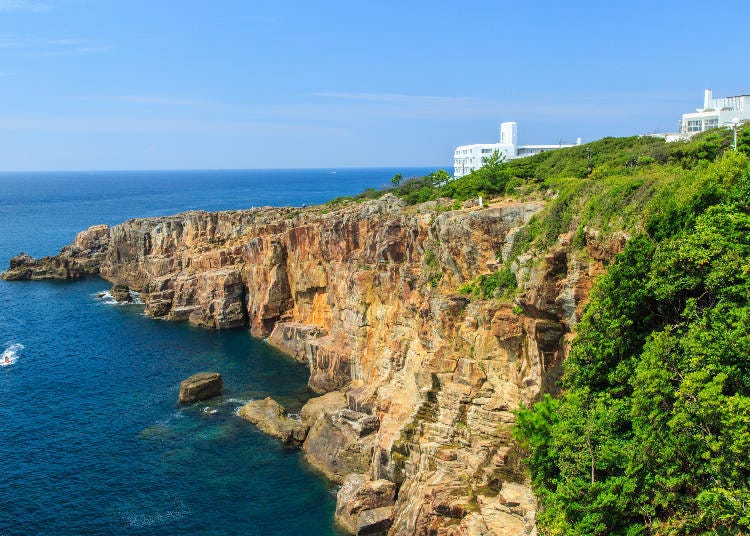
25. Sandanbeki: Majestic views and intriguing caves
This is another area that has been beaten into jagged shapes by the powerful waves of the sea that continue to make their assault against the cliff to this day. Come at the right time and you'll be able to witness the strength of these awe-inspiring waves that contrast beautifully against the peaceful ones on Shirahama Beach. There are ground observatories where you can glance up at the Sandanbeki from or you could also take a 36-meter-long elevator down into the cliffs to explore the massive and mysterious caves system tucked beneath.
-

-
Address
2927-52, Sandan, Shirahama-cho, Nishimuro-gun, Wakayama, 649-2211
View Map -
Nearest Station
Shirahama Station (JR Kisei Line / JR Kinokuni Line)
27 minutes on foot
- Phone Number 0739-42-4495
-
Address
2927-52, Sandan, Shirahama-cho, Nishimuro-gun, Wakayama, 649-2211
26. Fisherman's Wharf Shirahama: Sashimi, scuba, and sea-fishing
The wharf specializes in direct sales of seafood freshly caught from the sea located right next to it as well as other local produce, snacks, and goods. To that end, there is an eatery built right into the market itself where visitors can get the staff to process the fresh seafood they've just bought into hot and tasty meals on demand. There are also restaurants, beer houses, and cafes for those looking for other types of cuisine. Food isn't the only thing you can enjoy here either - visitors who dare are invited to take part in any of the scuba-diving, sea-fishing, or cruises available here as well!
-
Fisherman's Wharf Shirahamaフィッシャーマンズ・ワーフ白浜
- Address 1667-22 Shirahama Town, Shirahama, Nishimuro District, Wakayama 649-2211
Hours: Market 9:00 a.m. - 6:30 p.m. / Restaurants 11:00a.m. - 3:00 p.m., 5:00 p.m. - 10:00 p.m.)
27. Gongendaira Cafe: Simple and leisurely beachside cafe
The hidden secret cafe of Gongendaira is located in the Goshiki Beach area, which is about six kilometers away from Shirahama Beach to the south. White is the cafe's overall theme and simplicity is built into its atmosphere. The large and bright shop interior is trendy without being obnoxious and artistic graffiti decorate its walls, helping guests to detach themselves from the modern city vibe, almost as if you've stumbled upon a private little corner known only to a select few. Plenty of full-length glass windows allow you to glance out at the spacious beach outside from the safety and comfort of interior air-conditioning. To fully immerse yourself in this unique environment, step out onto the veranda once in a while and open your ears to the relaxing sound of the crashing waves.
Even the cafe menu is packed with Wakayama specialties. For example, their tomato pasta comes with ground Kumano beef and locally-grown Shirahama king trumpet mushrooms. The tomato sauce has been carefully prepared using organic local ingredients as well. All these come together harmoniously to form a delightful flavor that is uniquely Wakayama.
-
 秘境カフェ権現平秘境カフェ権現平
秘境カフェ権現平秘境カフェ権現平-
Address
1758-29 Saino, Shirahama, Wakayama, 649-2334
-
Nearest Station
Kiitonda Station (JR Kisei Line / JR Kinokuni Line)
29 minutes on foot
-
Address
1758-29 Saino, Shirahama, Wakayama, 649-2334
28. Adventure World: Gardens, zoos, aquariums, and family-friendly fun
Adventure World is a massive theme park complex that contains plenty of fun facilities such as gardens, zoos, and aquariums. Visitors can look forward to seeing adorable pandas, penguins, and polar bears, hand-feeding giraffes, or having a great meal at an adorable panda-themed restaurant. The park has additional facilities such as a Ferris wheel, roller coasters, go-karts and many other interesting activities to try out. Families with children will have no problem finding things to do to fill up an entire day here!
-

-
Address
2399, Katata, Shirahama-cho, Nishimuro-gun, Wakayama, 649-2201
View Map -
Nearest Station
Shirahama Station (JR Kisei Line / JR Kinokuni Line)
24 minutes on foot
- Phone Number 0570-06-4481
-
Address
2399, Katata, Shirahama-cho, Nishimuro-gun, Wakayama, 649-2201
Nachikatsuura / Kumano Places of Interest
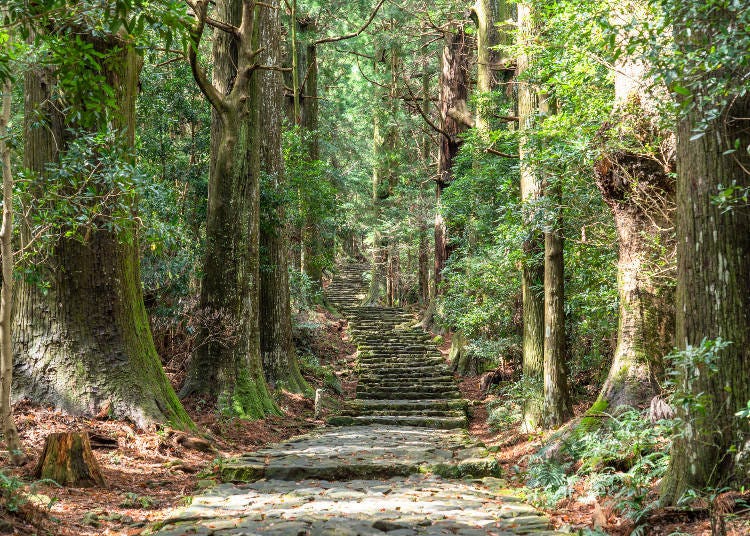
29. Kumano Kodo: Absorbing the spiritual essence of an ancient forest
The Kumano Kodo is a forested trail that is a part of the UNESCO Sacred Sites & Pilgrimage Routes in the Kii Mountain Range that is history and nature rolled into one charming package. Its sacred origins also means this is one of the most famous spiritual spots of Japan. Most visitors take the 7-kilometer long trail from Hosshinmonoji to Kumano Hongu Taisha. The path is shielded by luxuriant trees and clean, fresh air is available every step of the way, making the walk easy and pleasant even for complete hiking newbies.
-

-
Address
Nakahechicho, Tanabe-shi, Wakayama others, 646-0000
View Map -
Nearest Station
Kiitanabe Station (JR Kisei Line / JR Kinokuni Line)
40 minutes by bus
- Phone Number 0739-64-1470
-
Address
Nakahechicho, Tanabe-shi, Wakayama others, 646-0000
30. Daimonzaka Chaya: Be an ancient Japanese noble for a day
This shop located at the entrance of Kumano Kodo rents out costumes worn by ancient nobles because historically, Kumano Kodo was only accessible to those among the aristocracy. That means the clothing available for rent here will be somewhat different from the ones you can find in the regular shops. Walking through an ancient trail in an ancient-style kimono is a total mood in itself and what's more, can you just imagine the pictures? This is a unique chance to get a taste of the ancient Japanese noble life...or clothing, at least!
-

-
Address
392-4, Nachisan, Nachikatsuura-cho, Higashimuro-gun, Wakayama, 649-5301
View Map -
Nearest Station
Kiikatsura Station (JR Kisei Line / JR Kinokuni Line)
19 minutes by bus
- Phone Number 0735-55-0244
-
Address
392-4, Nachisan, Nachikatsuura-cho, Higashimuro-gun, Wakayama, 649-5301
31. Kumano Hongu Taisha: A secret shrine in the deepest part of the forest
The shrine is located deep in the Kii Mountain Range and accessible from the upper part of the Kumano Kodo trail, though do take note that there's a small bit of climbing involved. However, rest assured that any fatigue accumulated from that strenuous activity will be blown away once you behold this historic shrine in its full glory, protected in all directions by a living, breathing forest. It would be hard not to feel somewhat overwhelmed as you contemplate how the pilgrims of old rested in the same place that you're now taking a break in as well.
-

-
Address
1110, Honguuchohonguu, Tanabe-shi, Wakayama, 647-1731
View Map -
Nearest Station
Kiitanabe Station (JR Kisei Line / JR Kinokuni Line)
125 minutes by bus
- Phone Number 0735-42-0009
-
Address
1110, Honguuchohonguu, Tanabe-shi, Wakayama, 647-1731
32. Nachi Falls and Kumano Nachi Taisha: Majestically and beautifully divine
The 13-meter (about 42 feet) wide and 133-meter (about 436 feet) tall Nachi Falls is the longest waterfall in Japan by drop distance. The water rolls powerfully off a nearly vertical cliff face and Nachi Falls is counted among one of Japan's top three waterfalls alongside Kegon Falls and Fukuroda Falls. This waterfall is also considered the divine body of Kumano Nachi Taisha, a shrine for the worshipping of waterfalls. Naturally, the view of the waterfall from shrine grounds is every bit as divine as it was meant to be.
-

-
Address
Nachisan, Nachikatsuura-cho, Higashimuro-gun, Wakayama, 649-5301
View Map -
Nearest Station
Kiikatsura Station (JR Kisei Line / JR Kinokuni Line)
27 minutes by bus
- Phone Number 0735-55-0321
-
Address
Nachisan, Nachikatsuura-cho, Higashimuro-gun, Wakayama, 649-5301
-

-
Address
1, Nachisan, Nachikatsuura-cho, Higashimuro-gun, Wakayama, 649-5301
View Map -
Nearest Station
Kiikatsura Station (JR Kisei Line / JR Kinokuni Line)
25 minutes by bus
- Phone Number 0735-55-0321
-
Address
1, Nachisan, Nachikatsuura-cho, Higashimuro-gun, Wakayama, 649-5301
33. Oyunohara: Home to the largest torii temple gate in the world
This is where Kumano Hongu Taisha was originally located until it was severely damaged in a flood in 1889, resulting in the shrine's move to its current location. In the year 2000, a 33.9 meter (about 111 feet) tall torii temple gate was built on Oyunohara - the largest of such gates in the world. The inky black gate is made of steel-reinforced concrete which stands as a sharp contrast against the verdant green grass beneath and vivid blue sky above. The somber atmosphere that clothes the gate and its surroundings is something that must be seen in person to truly understand.
-

-
Address
1, Honguuchohonguu, Tanabe-shi, Wakayama, 647-1731
View Map -
Nearest Station
Kiitanabe Station (JR Kisei Line / JR Kinokuni Line)
125 minutes by bus
- Phone Number 0735-42-0009
-
Address
1, Honguuchohonguu, Tanabe-shi, Wakayama, 647-1731
34. Yunomine Onsen's Tsuboyu: Soak up 1,800 years of ancient history!
Already more than 1,800 years has passed since Yunomine Onsen's discovery. Its most well-known hot spring bath is called the Tsuboyu, which is tucked away in a simple bathhouse built on the bedrock of Yunotani River. The rock bath inside can only accommodate two persons at once. Each pair of guests will be allowed 30 minutes to soak up its beneficial waters before the next pair is rotated in. The legends say that an ancient official by the name of Hangan Oguri once had his illness cured by soaking in these very waters. To add to its mystique, the spring water here sometimes changes color up to seven times in a day. Definitely a must-visit site for fans of hot springs and mysteries!
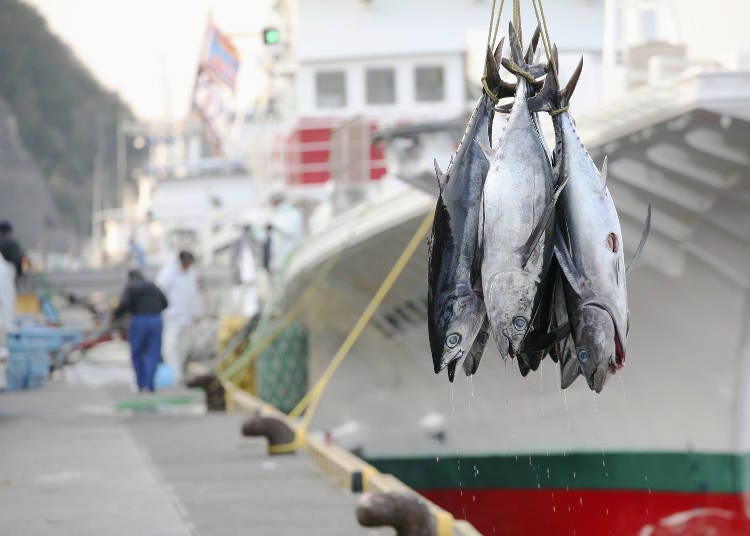
35. Katsuura Fish Market: Portside seafood fresh off the boat!
The freshest foods can be found in Katsuura Fish Market as it is located right next to the port. This includes tuna sashimi - the market's most well-known food item, seafood, agricultural produce, specialty goods, and more! Here is where you'll be able to enjoy premium tuna sashimi that tastes very different from the ones served farther inland. The lively market is bustling with activity every day as experienced masters demonstrate how sashimi slices are cut from tuna in live shows. There is adequate eating and resting places in the market for visitors to eat their food immediately while relaxing in the pleasant sea breeze and recharging themselves for the next destination to come!
-
Katsuura Seafood Market勝浦漁港にぎわい市場
- Address 7 Chome-12-Banchi Tsukiji, Nachikatsuura, Higashimuro District, Wakayama 649-5335
Hours: 8:00 a.m. - 4:00 p.m. (last order in the eatery zone closes at 3:30 p.m.)
Closed: Tuesdays (irregularly)
Translation by: Huimin Pan
Kiko Matsuda, Keiko Kimura, Risa Tsushi, and a team of female writers familiar with Kansai. We love eating, drinking and traveling! We share fun information based on our experiences.
- Area
- Category
*Prices and options mentioned are subject to change.
*Unless stated otherwise, all prices include tax.
Recommended places for you
-

Osaka Aquarium KAIYUKAN
Zoos, Aquariums & Botanical Gardens
USJ, Nanko Port
-

Jukuseiniku-to Namamottsuarera Nikubaru Italian Nikutaria Sannomiya
Izakaya
Kobe, Sannomiya, Kitano
-

Kambei Sannomiyahonten
Yakiniku
Kobe, Sannomiya, Kitano
-

Kanzenkoshitsuyakinikutabehodai Gyugyu Paradise Sannomiya
Yakiniku
Kobe, Sannomiya, Kitano
-

ISHIDAYA Hanare
Yakiniku
Kobe, Sannomiya, Kitano
-
Goods
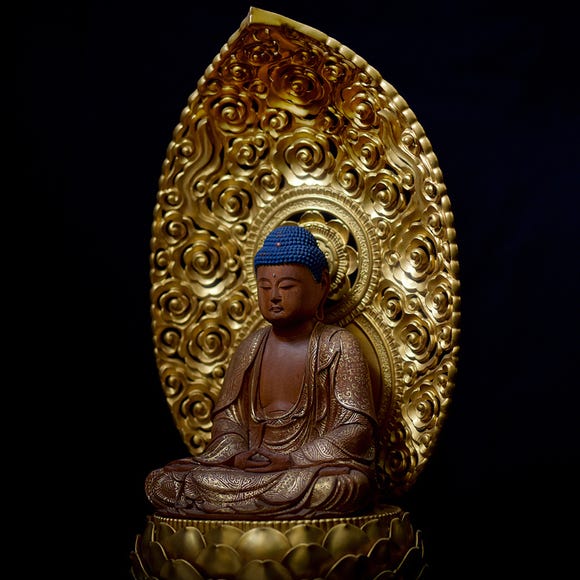
Yoshida Gennojo-Roho Kyoto Buddhist Altars
Gift Shops
Nijo Castle, Kyoto Imperial Palace
-

Hotel Universal Port: A Fun-Filled Stay Where You Can Meet the Minions (In-Depth Review)
by: Tabiningen
-

Kyoto Prefecture Guide: Destinations, Activities, Travel Advice, Shopping & More
-

Hyogo Prefecture Guide: Destinations, Activities, Travel Advice, Shopping & More
by: Kaori Kimura
-

Dorsett by Agora Osaka Sakai: Stay in a World Heritage Port Town Surrounded by History and the Sea (Newly Opened in 2025)
by: Yotsuka Hizuki
-

Where to See Fireworks in Osaka & Kansai (July–October 2025)
-

teamLab Announces New Permanent Kyoto Museum Opening in Fall 2025
Inspiration for Accommodations
-

Spacious Family Hotel in Namba: 20 Comfortable Stays for Family Fun
-
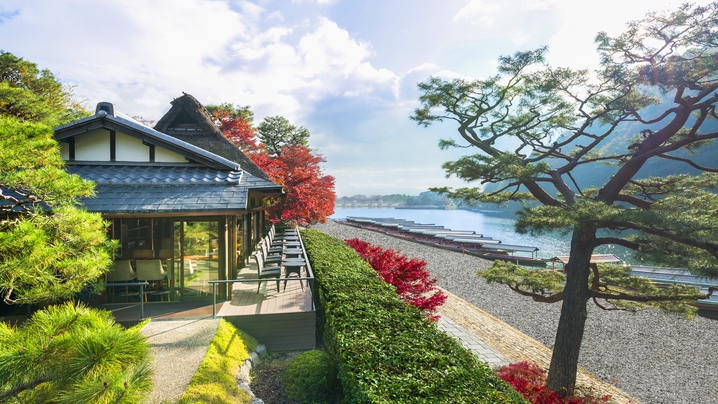
Charming Hotels to Enjoy the Spectacular Views of Arashiyama's Autumn Leaves from Your Room
-

Experience Stunning Views of Osaka Castle from Private Spaces: Top Hotels Near Osaka Castle
-
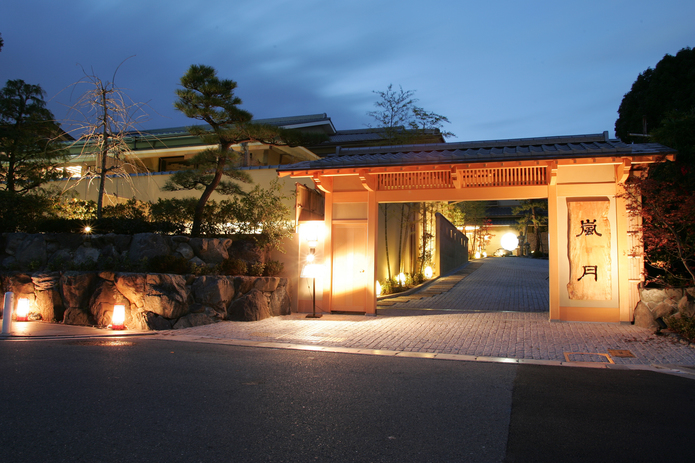
Recommended by Visitors! Arashiyama's Best-Rated Hotels
-

Family-Friendly Universal Studios Japan Hotel with Excellent Access
-
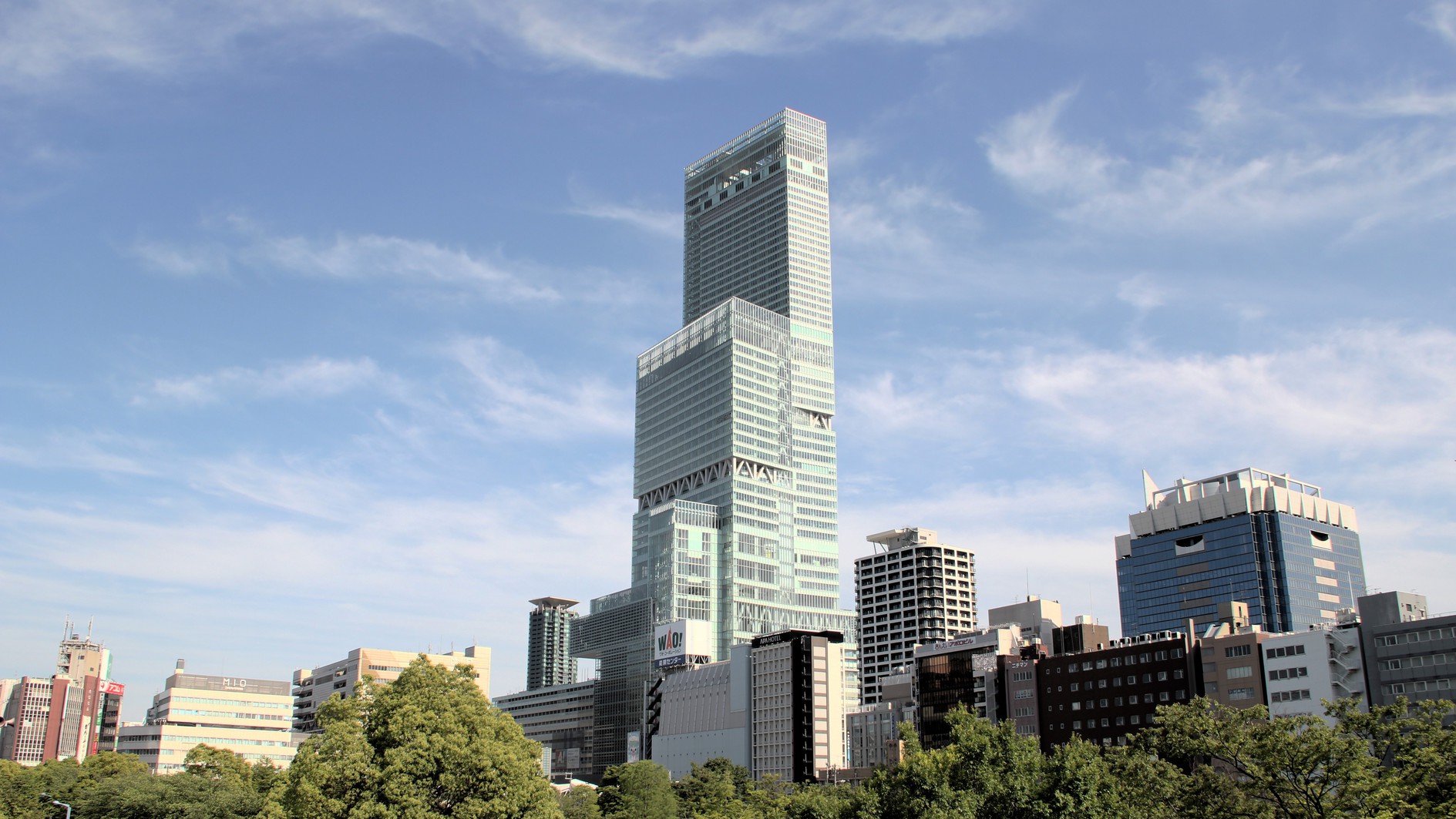
Enjoy a Comfortable Stay in Osaka! 10 Hotels with Convenient Airport Shuttle Services
-

Top 10 Recommended Hotels Near Namba Station with Great Access
-

Enjoy Night Views from Your Room! Recommended Hotels in Namba Area
-

Can’t Get Where You’re Going in Kyoto? What do “Agaru” and “Sagaru” Mean? Kyoto’s Unique Address System!
-

First Time in Nara: Where To Go And What To Do in Japan's Famous City
by: WESTPLAN
-

Inside Kyoto's Spectacular Sanjusangen-do Temple with 1,000 Gold Statues
-

Kyoto Gion Walking Guide: Top 10 Must-See Areas for First-Time Visitors
-

6 Surprisingly Cheap Things in Japan
-

Kichijoji – Explore Tokyo’s Top-Rated Stylish Suburb in Half a Day!
- #best gourmet Osaka
- #things to do Osaka
- #what to do in kyoto
- #what to bring to japan
- #best gourmet Kyoto
- #new years in Osaka
- #what to buy in nanba
- #Visiting Osaka
- #onsen tattoo friendly arima
- #daiso
- #Visiting Kyoto
- #best japanese soft drinks
- #japanese fashion culture
- #japanese convenience store snacks
- #japanese nail trends

















